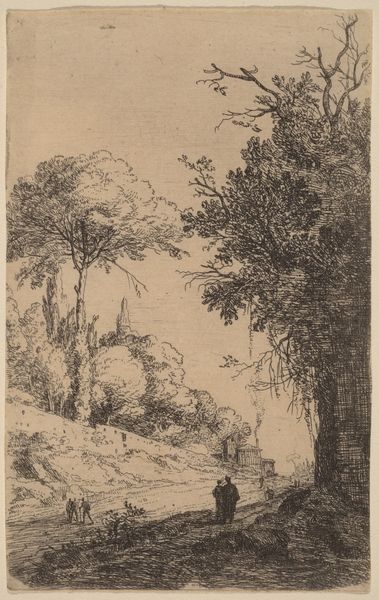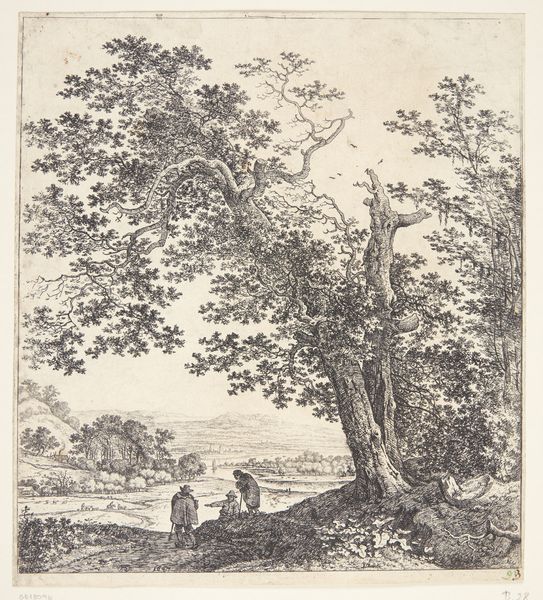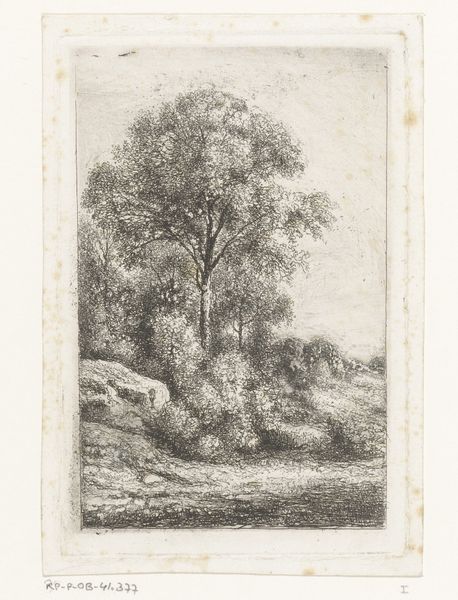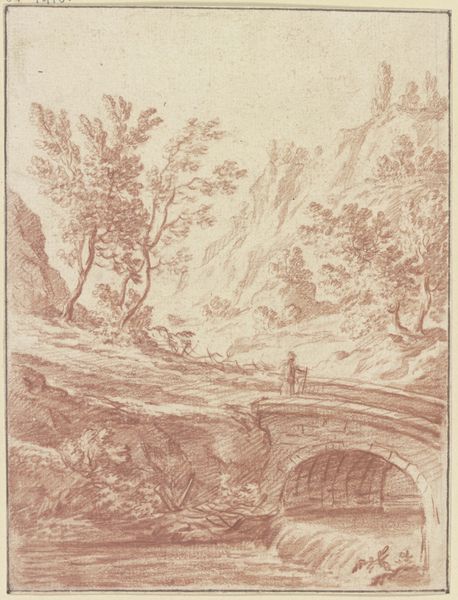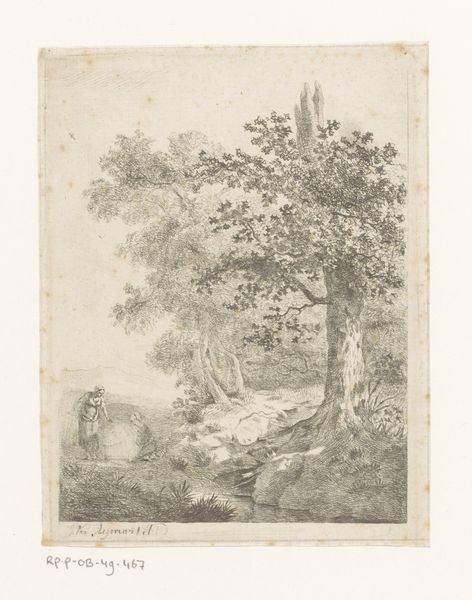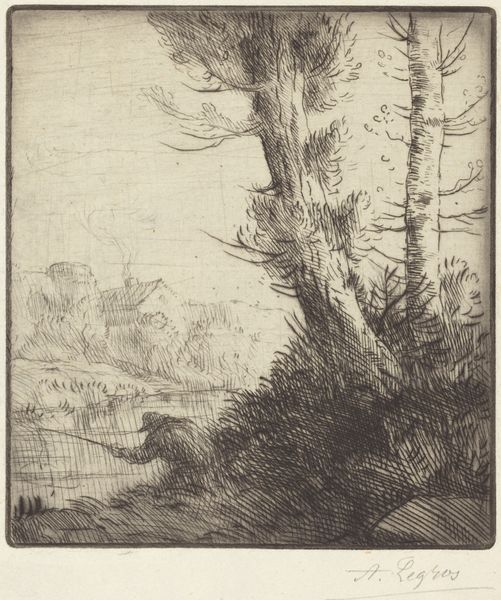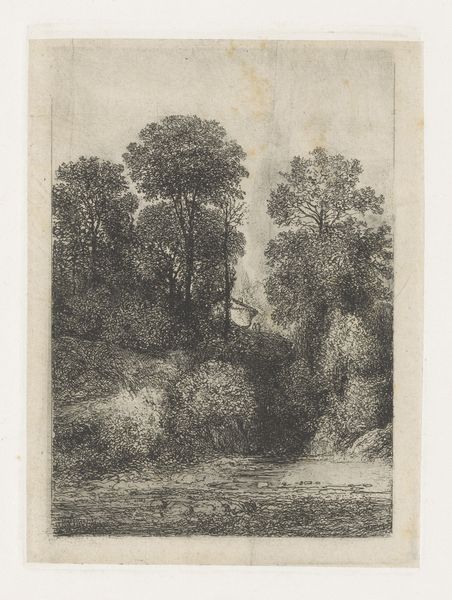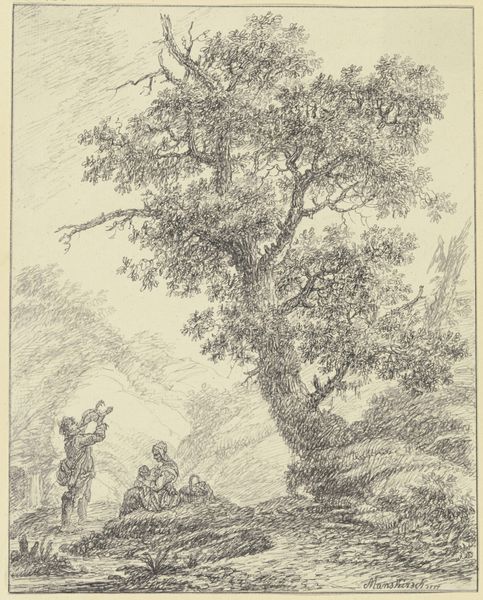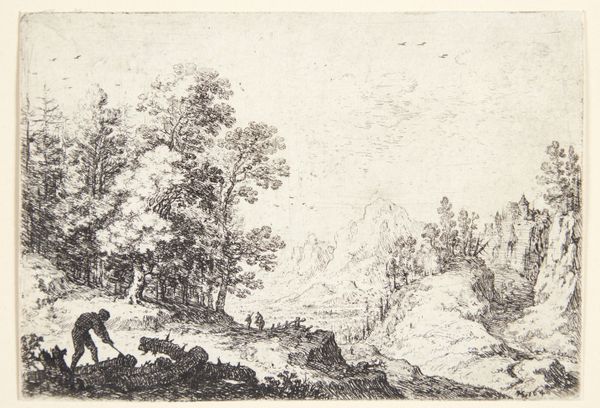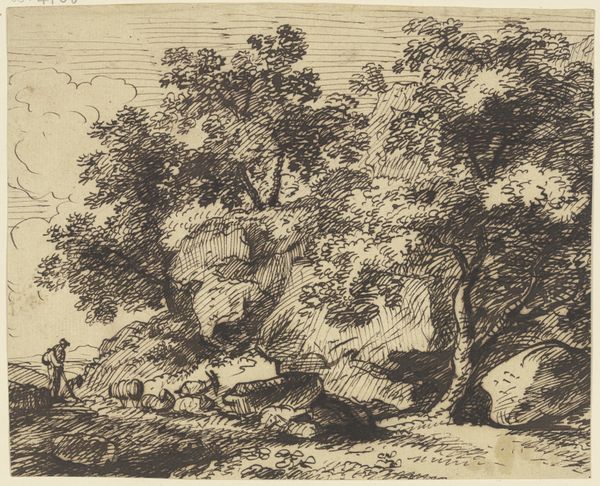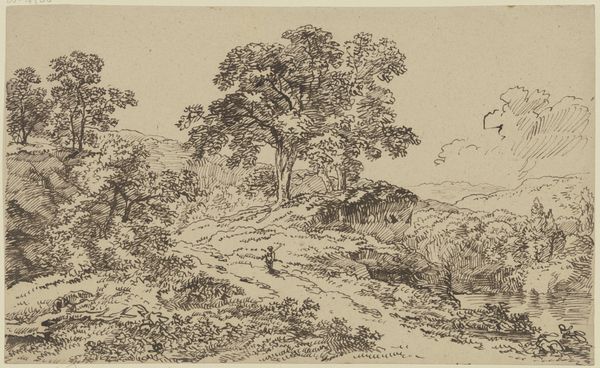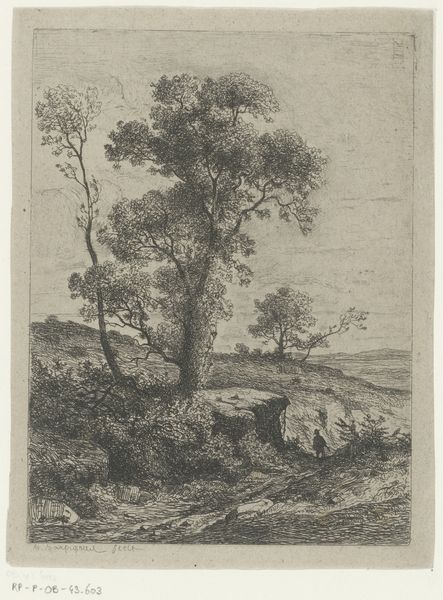
drawing, print, etching
#
drawing
#
baroque
#
dutch-golden-age
# print
#
etching
#
landscape
#
etching
Dimensions: 103 mm (height) x 65 mm (width) (bladmaal)
Bartholomeus Breenbergh made this print of a section of the Via Flaminia near Rome using etching, sometime in the 17th century. Look closely, and you’ll notice that this isn’t just a drawing. The artist would have covered a metal plate with a waxy, acid-resistant ground, and then used a fine needle to scratch away the image. Immersing the plate in acid would then bite into the exposed metal. This careful, painstaking process allowed Breenbergh to create multiple impressions, turning his art into a commodity. The print's material influence is visible in the intricate lines that define the trees and figures, each carefully etched to create texture and depth. This etching process mirrors the laborious nature of travel along the ancient Roman road, emphasizing the connection between the artist's work and the physical world it represents. The print, therefore, invites us to consider the convergence of nature, labor, and the burgeoning art market of the time.
Comments
No comments
Be the first to comment and join the conversation on the ultimate creative platform.
